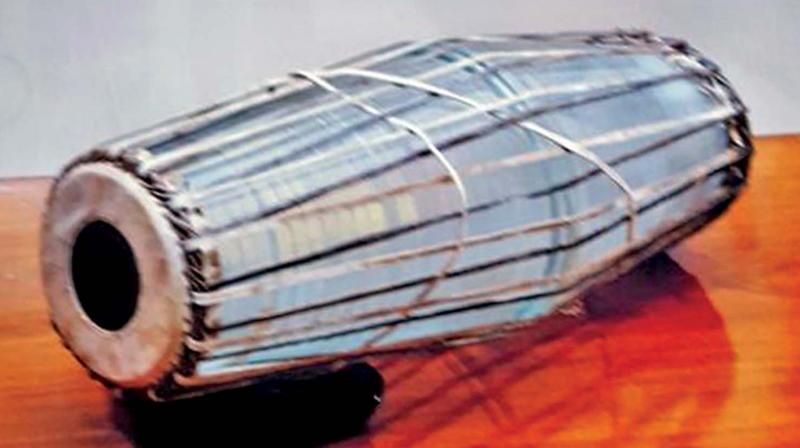This mridangam is a glass apart

Chennai: Percussion instruments come in various shape and sizes. The rhythmic sophistication of Carnatic classical music has for long depended on the mridangam to guide the tempo. The double barreled instrument native to India has always been considered the king of percussion. Over time the materials that go into making the mridangam have changed all that much. But, giving the instrument a modern, environment-friendly and innovative twist is percussion genius Dr Umayalpuram K. Sivaraman.
Sivaraman has designed the first ever glass mridangam, which he will dedicate to Lord Nandikeswara, the presiding deity of percussion, as well as to the larger music fraternity at the Parthasarathy Swamy Sabha in Chennai on December 17. Now, the glass is only going to form the core of the instrument and not replace the goatskin membranes that actually produce the sound so familiar to rasikas of classical music, particularly in the current month of Margazhi, which began today and is the high season of the city’s classical music and dance scene.
Explaining the rationale behind a glass core, Sivaraman, the percussionist who created decades ago a path breaking fiberglass mridangam, says, “Wood is used as the core for mridangam which helps produce nadham. The two ends of the hollow core are covered with goatskin, which in turn are laced to each other with leather straps. It is on this wooden core the mridangist creates magic.”
Saving the environment is part of Sivaraman’s quest to further refine the good old mridangam. He wants to conserve the jackfruit trees which provide the wood for the instruments. “When I was able to produce nadham with fiberglass mridangam, I thought why not try glass, commonly used in buildings and furniture. The glass core is of extra clear glass with very high transparency,” Sivaraman explains.
“Glass is made of two thirds silica sand and the rest with raw materials like dolomite, calcite and soda ash. Mridangam, takes its name from “mrid” or clay, primarily used to make the core of the instrument, and “angam” or limb of the performer. Here too, we have used silica (also part of ‘mrid’) and thereby it is traditional,” says Sivaraman in defending his environmentally-friendly mridangam with its glass core just in case the purists raise an objection.
Explaining how he tackled the challenge of matching the glass to an ancient art of drumming the mridangam with fingers, Sivaraman says, “Experts from Saint-Gobain Glass and entrepreneur brothers Ganesh and Karunakaran of Sakthi Sai Glass, Arumbakkam, helped me in making it. Also my technician Johnson converted the glass core into concert worthy mridangam. Glass we know is strong on compression. The design of concentric circles helped to pass on the force from either side along the wall of the core and utilised its strength.”
Having created something unique, Sivaraman concludes, “Thanks to the special design and method of cutting the glass pieces, the core was almost the exact shape and dimensions of the wooden core, and helped produce the right nadham.” As they say, the proof of perfect percussion would be hitting the ears of rasikas tomorrow when Sivaraman plays his new mridangam.

